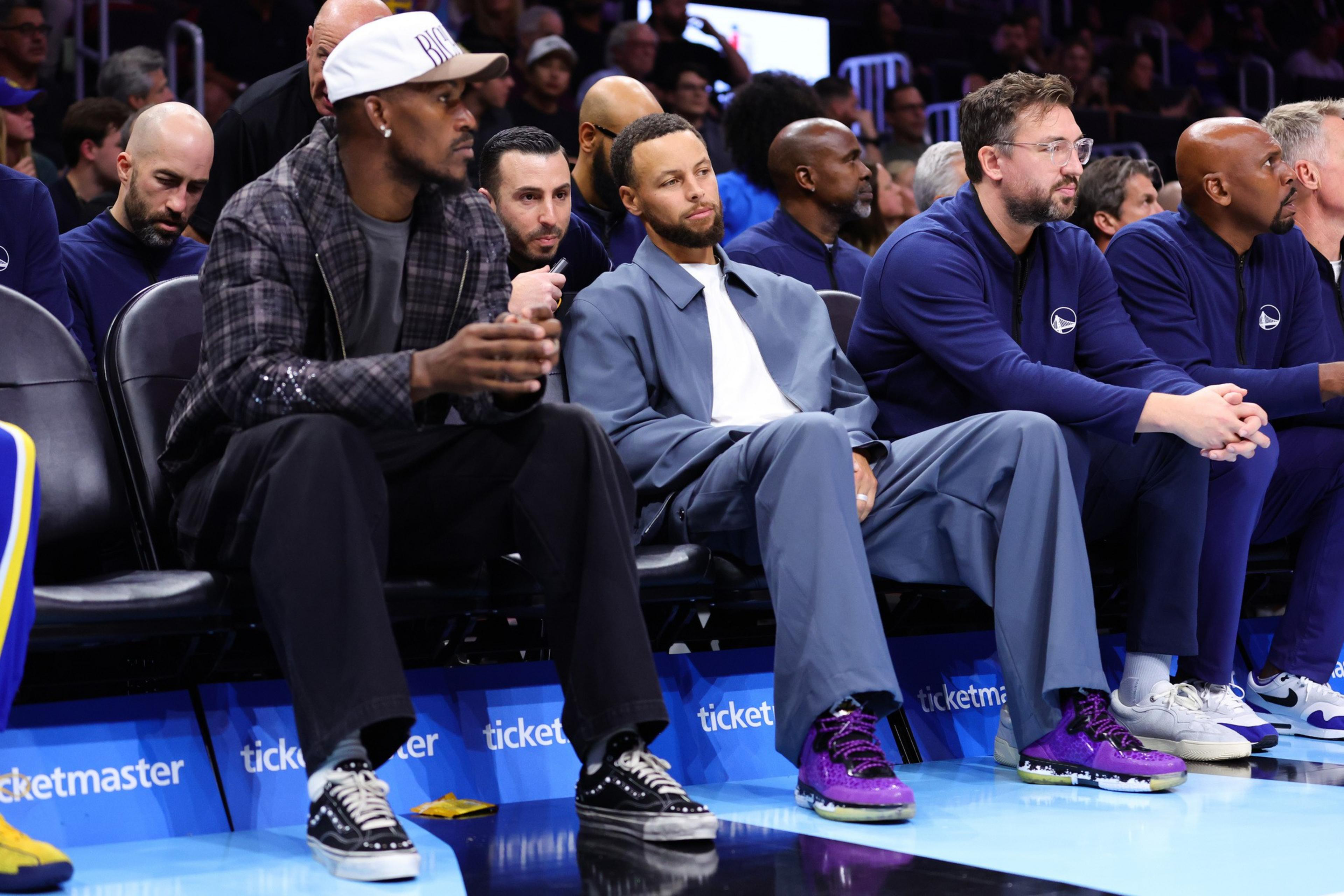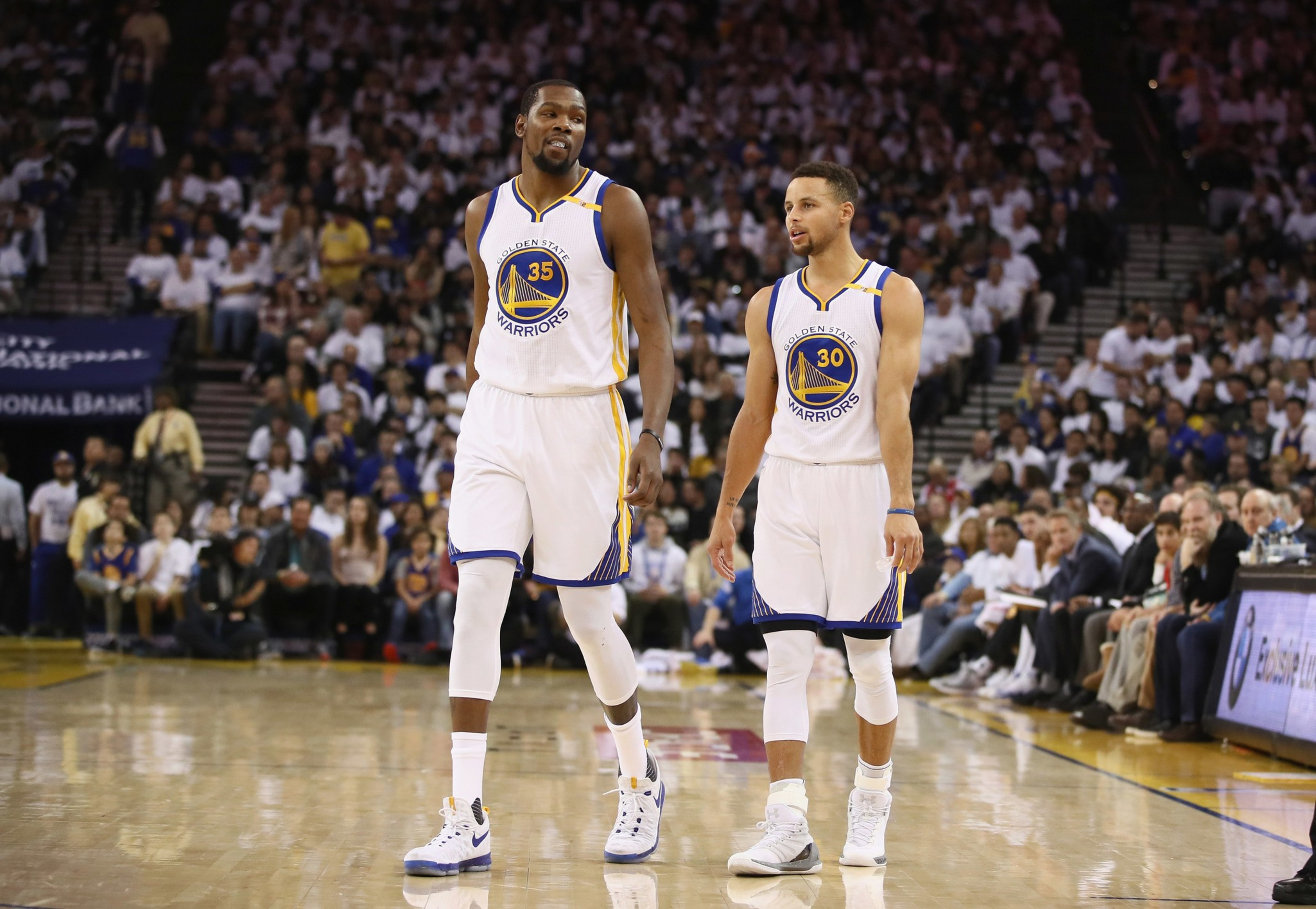Want more ways to catch up on the latest in Bay Area sports? Sign up for the Section 415 email newsletter here and subscribe to the Section 415 podcast wherever you listen.
The arrow has been pointing down on Under Armour for years, with its stock trading about 90% off its all-time high. But last week’s news that the shoe and apparel company was ending its partnership with Steph Curry stunned some industry insiders.
Curry inked what was purportedly a lifetime deal with the Maryland-based company in 2023. “I couldn’t imagine Under Armour without Stephen, or Stephen without Under Armour,” CEO Kevin Plank said then. The company empowered the star to carve out his own brand within UA, much like Michael Jordan had done with Jordan Brand at Nike.
On the surface, the partnership with Curry was one of the few things Under Armour had going for it. And the company let him go?
“It seems like an odd moment to have a breakup,” said Lauren Anderson, director of the Warsaw Sports Business Center at the University of Oregon.
After releasing the final Curry shoe in February, Under Armour will restructure the business amid a turnaround effort. Cutting costs is a major part of that. Under Armour has ended agreements with college athletics programs, backed out of its 2016 deal with Major League Baseball to exclusively supply uniforms, and cut other athlete endorsements.
Where Curry — and, specifically, Curry Brand — goes from here is a mystery.
It’s rare, but not unprecedented, for a superstar of Curry’s stature to split from a primary endorser. But a day after the announcement, Curry said the partnership ending was in the best interest of both parties.


“I’m a free agent,” Curry said Nov. 14. “The sneaker industry is difficult. Things change over time, and … you give your best effort to create something sustainable. [It’s] a little disappointing how it turned out, based on where Curry Brand has been the last five years and the announcement we had two years ago. But I think it’s the right thing for everybody.”
What’s unusual about this situation is that Curry maintains all Curry Brand intellectual property. He’s free to operate independently — or shop it around.
The birth and death of the partnership
Curry began his NBA career as a Nike athlete. But in a now-infamous 2013 pitch meeting (opens in new tab) to renew his contract, executives mispronounced his name and forgot to replace Kevin Durant’s name on a PowerPoint slide.
To win Curry, Under Armour offered the burgeoning young star a signature sneaker and a higher annual compensation package that Nike declined to match.
What came next is sneaker-deal legend: Curry won back-to-back MVP awards, and Under Armour’s stock peaked at more than $53 a share in 2015. But his signature sneaker line never resonated like those of some of his Nike counterparts.
The Curry 2 “Chef” low-top sneakers, released during the 2016 Finals, were ridiculed by fans. None of his shoes did well on the resale market on StockX or eBay, suggesting they were of minimal value to collectors. From the start, Curry’s shoes “have always kind of been denigrated by the market,” Morningstar senior equity analyst David Swartz said.

“They haven’t been able to break through on the footwear side, and essentially now they’re giving up — at least in basketball,” Swartz said. “It’s hard to see how they’re going to be relevant.”
In 2020, Under Armour launched Curry Brand, an extension of the point guard’s partnership with the company. The 2023 agreement that was supposed to last beyond Curry’s playing days made him the president, and De’Aaron Fox became a Curry Brand athlete.
But breaking into the basketball business has proved tough for all of Nike’s competitors. Under Armour’s basketball business — mostly Curry Brand — is expected to generate roughly $100 million to $120 million in sales in the 2026 fiscal year. That would represent about 2% of UA’s annual revenue. By comparison, Jordan Brand did more than $7 billion in sales — about 16% of Nike’s revenue.
When Curry signed the “lifetime” extension in 2023, headlines suggested the contract could be worth $1 billion. In reality, he was awarded $75 million in stock grants, to be vested in 2029 and 2034. Not only are those worth substantially less now, but the fine print reveals they’re subject to proration in the event of early termination. So while Curry got compensated in the divorce, he didn’t take home as much cash as the headlines once suggested.
But Curry doesn’t have to start from scratch like other megastars who have found themselves in a similar position.
GOAT analogs
There are two helpful parallels that have laid blueprints for Curry to follow: Roger Federer and Tiger Woods.
In 2018, Federer was past his prime but had just won the Australian Open when Nike declined to renew his deal. “Nike left him,” his longtime agent (opens in new tab)said (opens in new tab).
Federer had been a Nike athlete for 24 years, and his agent recalls the marketplace being chilly to him despite his fame as one of the greatest tennis players ever. Consumers associated him with Nike, and bringing on someone of his profile risked overshadowing other brands’ signed talent.
Federer ended up signing a $300 million apparel deal with Uniqlo and a shoe deal with sneaker startup On that included equity. Bloomberg (opens in new tab)estimates (opens in new tab) that the latter deal is worth about $500 million, pushing Federer’s net worth past $1 billion.

Woods, meanwhile, started his own label, Sun Day Red, after his 2024 split with Nike. His partnership with Nike lasted 27 years, and golf is a (opens in new tab)notoriously difficult business to make a profit in (opens in new tab).
“I don’t think it’s big at all. I don’t think it’s done much,” Swartz said of Sun Day Red, which is privately held.
Unlike Curry, neither Federer nor Woods kept their branding with Nike in their divorces.
“Nike has two of the most iconic players ever in their sports, if not the most, and they cut ties with them,” Anderson said. “Nike’s got to play the hedge on the future and what’s trending. You can see the business reasons on both sides. But both of these companies provide a really interesting look at what Steph could do next. There are a couple of different paths you can go.”
Curry’s options
Since his agreement with Under Armour lapsed, Curry has used pregame warmups as opportunities to test out other brands, have fun, and pay homage.
For his first game without Under Armour, Nov. 14 against San Antonio, he warmed up in Nike Mambacitas, a nod to Kobe Bryant. Two games later, he walked into the Kia Center in Orlando, Florida, wearing retro Shaq Reeboks and went through his pregame ritual in Nike Air Penny 2s.
But don’t read too deep into his selections. Curry’s just finally able to show his sneakerhead side.
Experts laid out a few opportunities for Curry: an unlikely reunion with Nike; a deal with a lesser brand that has a basketball business, such as Adidas or New Balance; a team-up with a Chinese company, similar to what Jimmy Butler and Klay Thompson have done with Li-Ning and Anta, respectively; or maintaining Curry Brand’s independence.
Anderson said the least likely scenario would be starting something around Curry Brand by himself. Although Curry, 37, has his Thirty Ink business apparatus to tap into — plus potential cash from private equity — developing, producing, and distributing sneakers takes the kind of time, financial investment, and organization that is difficult to balance as an indie. Jaylen Brown’s 741 performance brand has gone down this route.
“Look at how hard it’s been for Under Armour. Under Armour’s a multi-billion dollar company,” Swartz said. “And they tried for many years. So imagine what it’d be for a startup. It’s an extreme long shot, especially given Steph’s age. … In his retirement, he probably wants to spend a lot of time playing golf and stuff, rather than dealing with distribution issues and production issues — headaches it takes to manage a brand on your own.”
Industry experts also consider Nike to be far-fetched as a landing spot, for a number of reasons. The company is trying to find a new crop of athletes for when LeBron James and Kevin Durant are done, and Curry wouldn’t exactly address that objective. Also, as former Nike marketing executive (opens in new tab)Jordan Rogers pointed out (opens in new tab), it would be awkward to add Curry Brand when the company’s current stars, including James, don’t have standalone properties.

Plus, with more than 80% market share in basketball shoes, Nike wouldn’t need Curry as much as other brands looking for a quick lift.
Adidas or New Balance might be a more natural fit. Adidas’ signature athlete is Anthony Edwards, who played on Team USA with Curry. New Balance’s roster includes top pick Cooper Flagg, Kawhi Leonard, and Curry’s godsister Cameron Brink. Each company also makes golf apparel, which may interest Curry Brand in the long term.
Chinese companies Anta and Li-Ning may represent the most lucrative deals upfront for Curry. He’s extremely popular in China, which has a massive market of hoops fans. He can always consult Butler or Thompson about their experiences working with the brands.
If Curry pursues the path Federer did with On, he might seek a relatively unknown brand — or one that doesn’t even have a basketball division. Perhaps On wants to get into the basketball business and sees Curry Brand as a long-term legitimacy play. Salomon is another emerging performance company that is active in running, hiking, climbing, and skiing circles. Puma (opens in new tab)may be up for sale (opens in new tab); perhaps Curry Brand could boost its value and resuscitate it.
“I don’t think you go to a brand that’s older, traditional, or struggling,” Anderson said. “I think you maybe go to a brand that’s sort of unexpected, doesn’t have anybody else in their portfolio of endorsers, and could be something new and exciting, and try to get that equity play. Either way, I think he’s trying to get an equity play, because why wouldn’t you?”
The opportunities for Curry aren’t exactly endless. To borrow one of his words, perhaps the best options might be the underrated ones.



